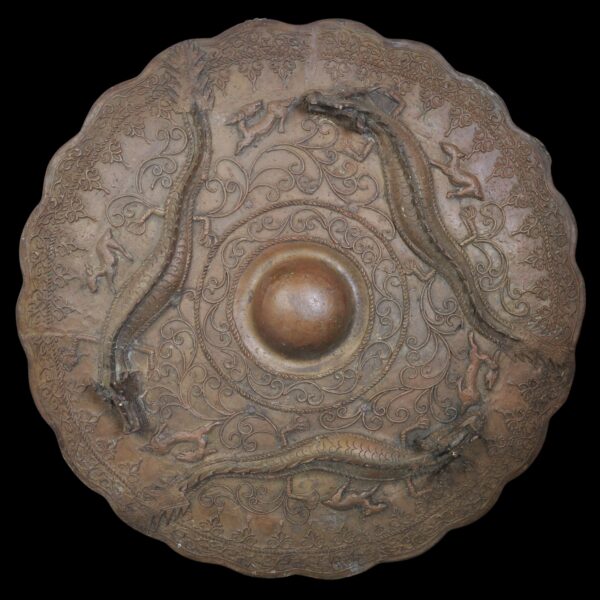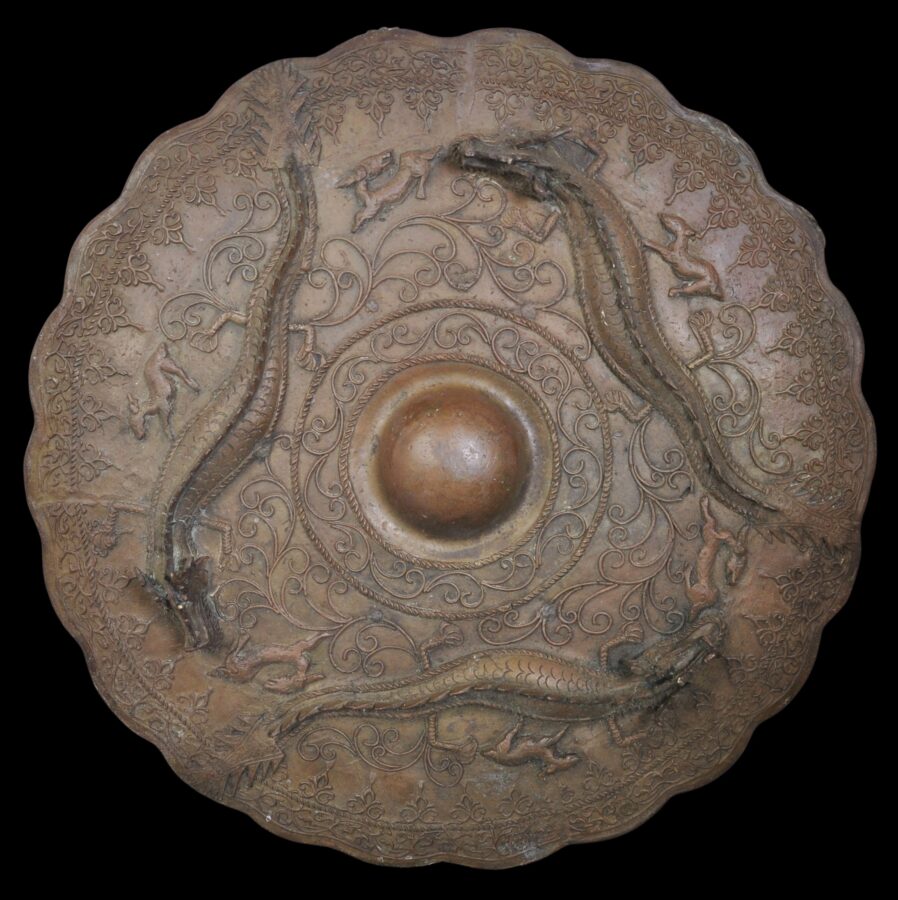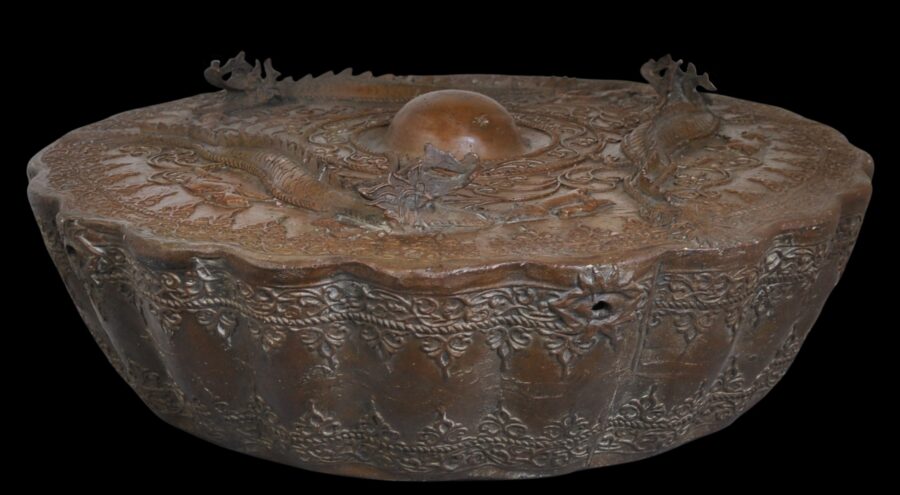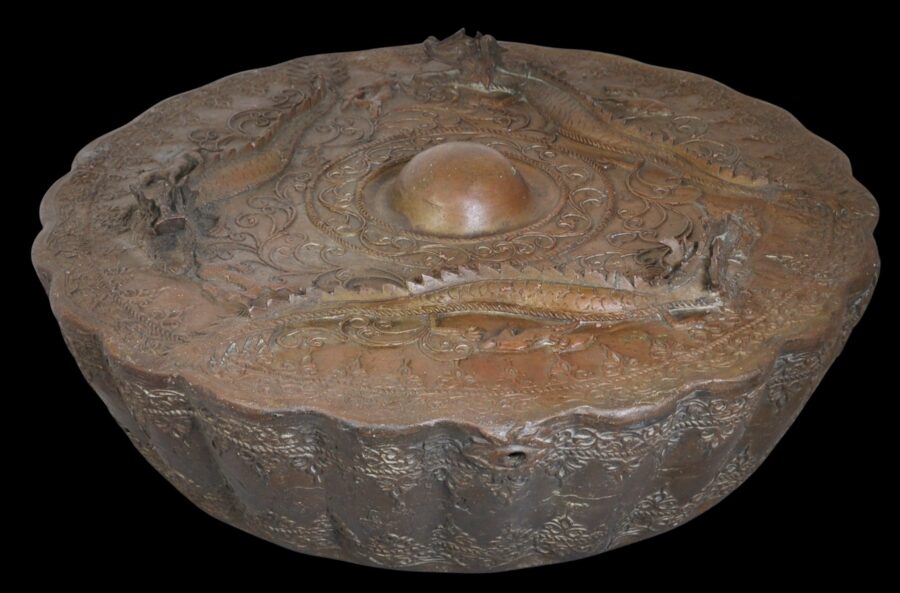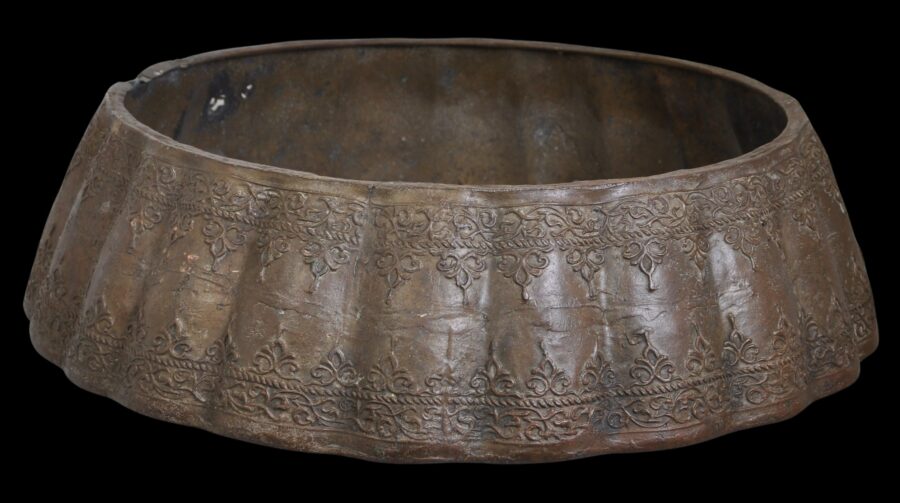This ceremonial gong or tawak-tawak is from Sarawak or Brunei on the island of Borneo. It is among the finest examples of a Borneo gong that we have seen, most particularly because of its everted, scalloped sides or rim, and surface decorated with dragons in high relief.
Cast using the lost wax process, it is elaborately decorated on the face with three dragons swirling around a central, raised, hemispherical boss, amid scrolling seaweed patterns, as well as deer-like creatures. The wide and everted rim is similarly decorated with scrolling seaweed motifs.
The remarkable feature of this gong is that not only are the bodies and serrated tails of the dragons in unusually high relief, but their heads lift right off the surface of the gong a full five centimetres and are in every respects three-dimensional.
These have been cast separately and applied.
The particularly prominent central boss and wide rim are typical of Malay gongs compared with Thai and Burmese gongs that are flatter and more shallow. There are some minor casting holes but overall, it is in fine condition.
Tawak-tawak once were used as signal gongs to call people together. They tended not to be used as part of a gamelan orchestra as in nearby Indonesia. Gong smiths, like kris smiths, worked in an atmosphere of magic and incantation. Some gongs were believed to be protected by supernatural beings (Singh, 1985). They also served as status symbols and visible displays of wealth and power. Over time, such gongs became heirloom items and a means of storing wealth.
Extant examples of old brassware from Brunei and elsewhere on the island of Borneo frequently exhibit strong Chinese influence such as dragons despite Islam being Brunei’s main religion today.
Children’s stories that are still told in Brunei and Borneo feature tales of Chinese princes and dragons. One tells of a dragon that lives atop Mount Kinabalu (Borneo’s highest mountain) where it guards a magnificent precious stone the size of a peacock’s egg. The Emperor of China hears about the stone and tells his three sons that whichever one of them brings back the stone will be made his heir; the other two will be killed. One son manages to trick the dragon and captures the stone. But the other sons lie to their father that they were the ones to take the stone. Ultimately, the Emperor discovers this deception and the wayward sons escape China, one of whom returns to Brunei and founds a princely dynasty there.
The gong here has a darkened patina. There are some expected small casting holes to the rim, but otherwise is one of the most decorative examples we have seen.
References
Chin, L., Cultural Heritage of Sarawak, Sarawak Museum, 1980.
Singh, B., Malay Brassware, National Museum of Singapore, 1985.


